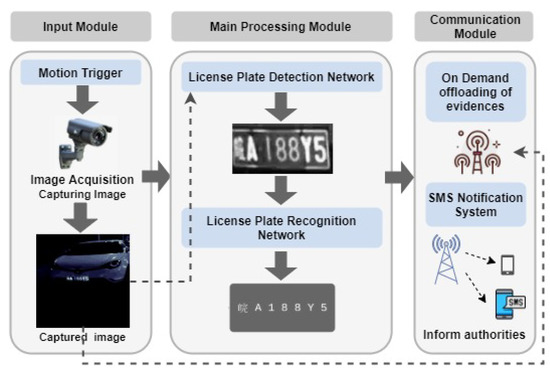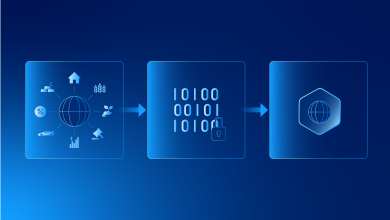
When executives evaluate their investments in license plate recognition technology, they require tangible evidence that goes beyond marketing promises and demonstrates a long-term return on investment (ROI). In this case, there is no better proof than the total cost of ownership analysis, as it reveals facts about initial affordability. The challenge faced by major organizations worldwide is achieving accurate vehicle identification while avoiding the trap of hardware obsolescence, which can completely halt operations or necessitate expensive replacements every few years.
True Cost of Hardware-Based License Plate Recognition
A quick look at license plate recognition hardware pricing shows attractive initial numbers. Single units cost less upfront than comprehensive software deployments, creating an illusion of affordability that disappears rapidly once organizations calculate total ownership costs. Here specifically comes the problem that turns “affordable” hardware into expensive mistakes.
But before we break down the cost structure of each License plate technology approach, you need to understand the technical difference between hardware LPR and server-based LPR:
Why Hardware LPR Falls Short at Scale?
Traditional license plate recognition cameras are reliable when organizations consider low-scale operations that depend on monitoring a few specific locations. However, when applying to large-scale entities for wider operation, hardware LPR cameras demonstrate significant inefficiency and may not represent the best investment for critical reasons:
-
System Updates and Maintenance
Any software update or technical repair needed requires individual application on each camera. Unlike server-based LPR systems where administrators manage everything from one centralized platform.
-
Infrastructure Replacement Costs at Scale
Upgrading from existing regular CCTV cameras to new LPR hardware carries substantial costs in large-scale environments. Server-based LPR systems integrate easily with existing infrastructure without requiring any changes.
| Criteria | Hardware LPR Cameras | Server-Based LPR Systems |
| Initial Setup | High cost per unit; complete hardware replacement required | Leverages existing camera infrastructure; minimal hardware investment |
| Software Updates | Applied individually to each camera; time-consuming | Centralized deployment to all cameras simultaneously from a single interface |
| Technical Support | Individual camera troubleshooting requires on-site technician visits | Centralized issue resolution; remote diagnostics and fixes |
| Accuracy | 85-92% under optimal conditions; degrades in challenging scenarios | 92-98% across diverse conditions through continuous machine learning |
| Scalability | Cost multiplies with each additional camera; exponential deployment expenses | Scales horizontally; adding cameras requires only configuration changes |
License Plate Recognition Accuracy: The Expensive Gap
Recognition accuracy varies substantially between hardware devices and server-based software systems, and this gap translates directly into operational costs.
AvidAuto from AvidBeam Technologies demonstrates how advanced algorithms achieve superior performance: 98% accuracy rates for Arabic characters, 92% accuracy for English text recognition, and superior performance in difficult lighting conditions. Machine learning models trained on millions of plate images recognize characters even under adverse conditions like reflective surfaces, angled plates, or poor lighting that defeat hardware-based systems.
Server-based license plate recognition platforms like AvidAuto change the equation fundamentally. Organizations leverage existing camera infrastructure, adding scalable recognition capabilities without massive hardware investments. Software-based systems utilize existing network infrastructure efficiently, reducing installation complexity and ongoing maintenance requirements that make hardware deployments expensive at scale.
Server-Based License Plate Recognition Integration
Server-based license plate recognition solutions work easily with existing security infrastructure, connecting to current camera systems without complex rewiring. For example, AvidAuto from AvidBeam supports cameras from 2 megapixels up to 4K resolution while operating on standard hardware configurations. Organizations with existing camera networks gain from platforms integrating with present investments rather than requiring complete infrastructure replacement.
AvidAuto Features
- License plate recognition (Arabic/Latin)
- Vehicle access density analysis
- Vehicles count (daily/weekly/monthly)
- Detects license plate type, model, make, & color
- Create vehicle watchlist (deny/allow lists)
- Searching for cars by license plate, date and time, and location
- Track a specific car to identify the vehicle’s movement pattern
- Customizable dashboard and detailed reporting formats
Server-Based License Plate Recognition Advantage
Yes, quality video analytics systems for license plate recognition cost more upfront than traditional hardware cameras. But looking at the complete financial picture changes everything:
- Organizations gain maximum benefit from server-based solutions through reduced initial investment (existing cameras work with recognition software).
- Lower maintenance costs (software failures only affect computing components).
- Scalability without capital expense (adding cameras requires only configuration changes).
- Future-proof investment (upgrades happen through software updates).
That’s why worldwide license plate recognition industry reached USD 1.99 billion in 2024 with projections to achieve USD 3.65 billion by 2033, expanding at a 7% CAGR between 2025 and 2033 (Business Research Insights, 2025). This growth demonstrates increasing adoption, but the faster growth rate for software solutions reveals where the market sees superior value.
If you’re ready to see how AvidBeam’s proven license plate recognition solutions can deliver measurable ROI for your organization, contact our experts today at [email protected] to schedule a personalized consultation.



